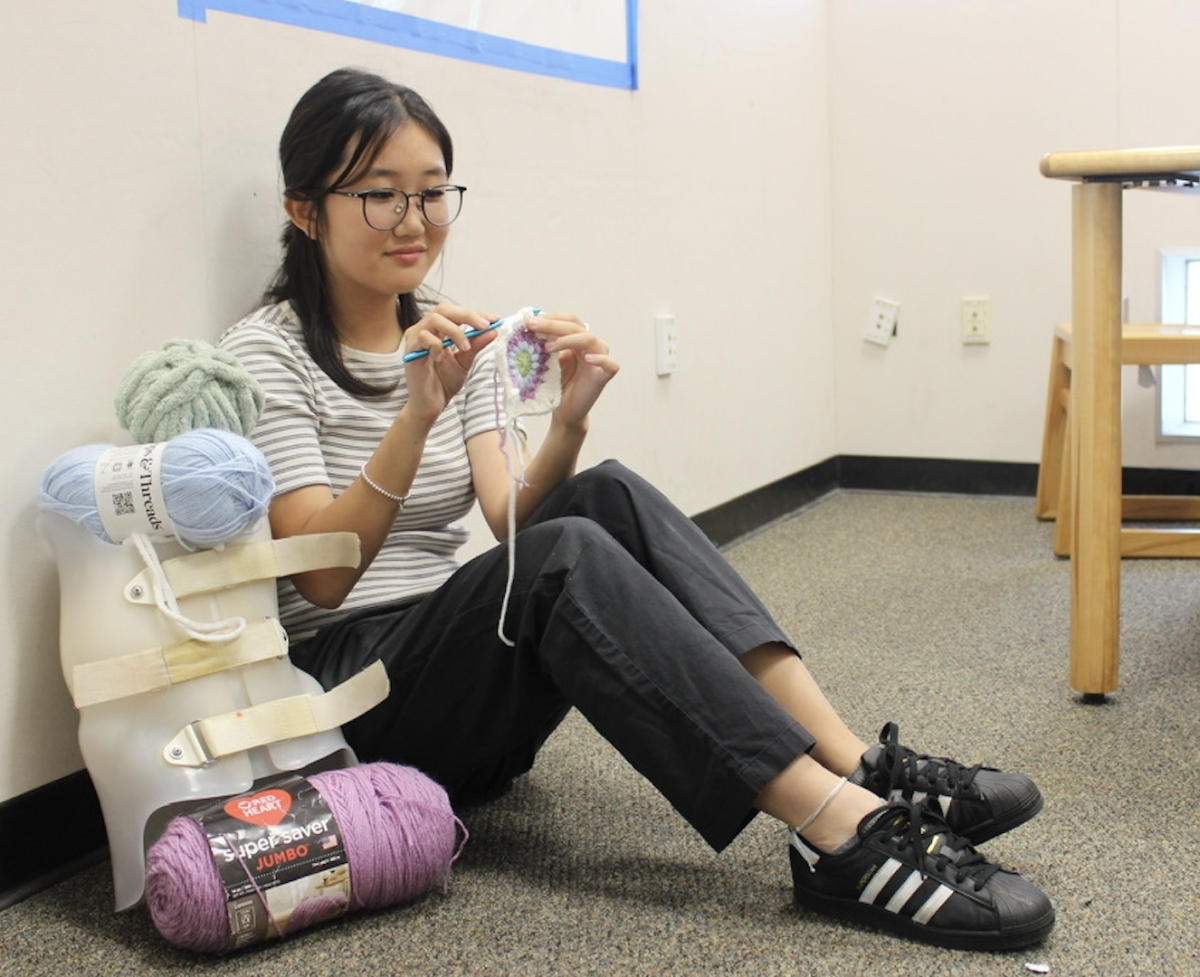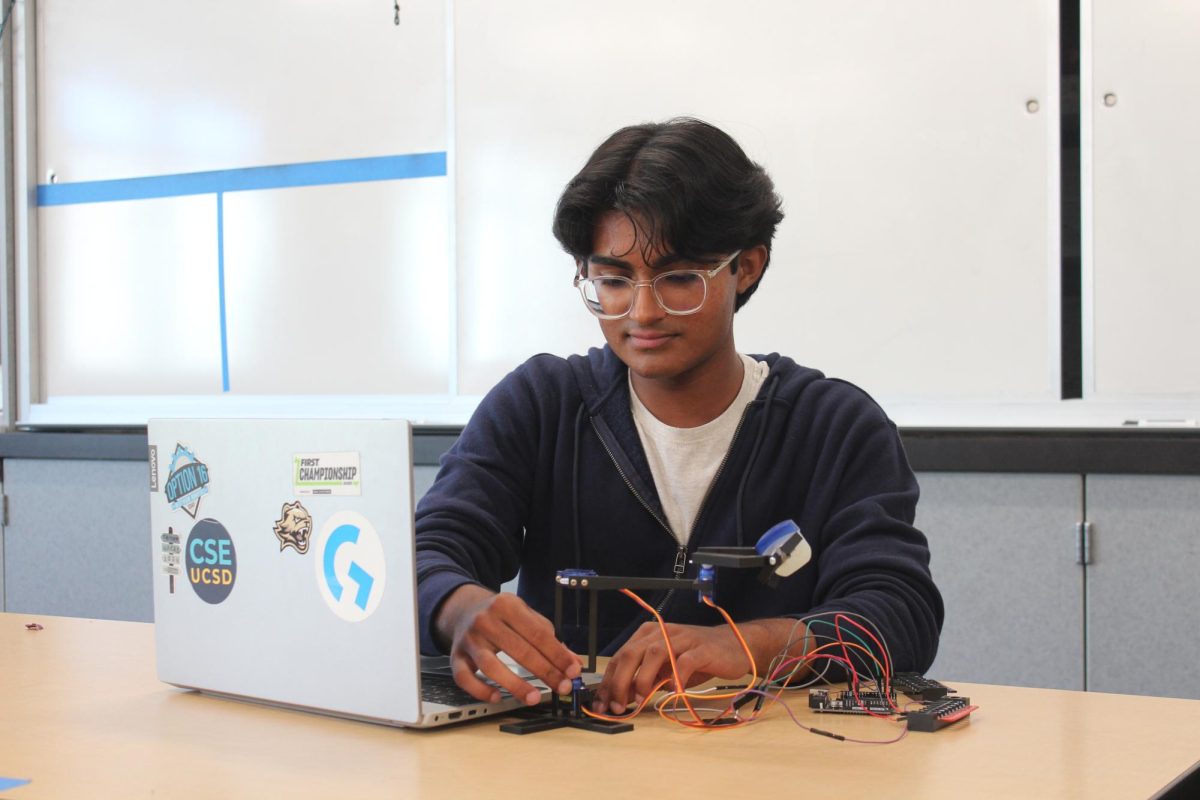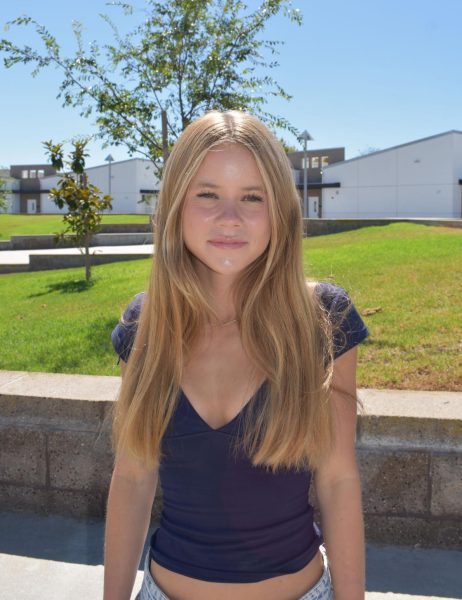At a Students for Justice in Palestine (SJP) protest at UCLA, May 1, Caitlynn Hauw (’23), standing behind a metal barrier, started a chant. “We’re not leaving and we’re not scared,” she yelled, looking into the eyes of her friend next to her as their voices synced to the drumming on his upturned water jug.
SJP at UCLA, according to their Instagram, has five demands: the withdrawal of UC funds from companies involved in the Israeli occupation, transparency of the UC and UCLA foundation’s assets, the abolishment of policing of pro-Palestinian protests, the call for an immediate ceasefire, and the breaking of connections to Israeli universities.
The Justice in Palestine rally at UCLA protested the clearance of a pro-Palestine encampment by police at Royce Hall. Hauw arrived at the protest at 11:30 p.m., May 1, and the encampment was scheduled to be cleared between 3 and 4 a.m., but was delayed by protesters until around 6 a.m., May 2.
“A lot of people were telling me that it was really dangerous,” Hauw said. “But for whatever reason, I wasn’t scared at that time, and a quote kept repeating in my mind: ‘If you stand for nothing, you’ll fall for anything.’ I wanted to be strong in my convictions and to actually make a difference. And this is the night where it seemed like it was really, really going to matter that people were there and people were showing up to support.”
Protests have taken place at college campuses around the country since April 17, starting at Columbia University in New York City. Swasti Singhai (’23) is a student journalist for The Daily Californian at UC Berkeley. She covered a confrontation between pro-Israeli and pro-Palestine protesters, May 1, at UC Berkeley.
She said the main motive of the pro-Palestinian protests is to raise awareness for the ongoing conflicts in Palestine, although protesters do advocate for policies specific to their universities.
“In terms of what the encampments and generally the student protests are calling for, it’s divestment because UC’s and a lot of other universities invest in companies that are linked [to] or provide weapons to Israel,” Singhai said. “It would be a decent amount of money. Student governments across the UC’s have passed resolutions for divestment, which means that the funds of our student government won’t be invested in certain companies [with ties to Israel]. But the UC Regents, their money is still being invested.”
YJ Si (’22) observed the pro-Palestinian encampment at USC, which started on May 1 where protestors resided at Alumni Park.
“The first day…there were cops everywhere,” Si said. “Throughout the day it got violent pretty fast from around 11 a.m. The Department of Public Safety at USC tried shutting it down and it got a little rough-handed. But from 11 to about 6 to 7 p.m, when the cops showed up, it was pretty calm. After that they were just trying to clear it out.”
The encampment at UCLA also grew violent at times according to Hauw. During the protests there, Hauw and others used their bodies to block police from entering staircases leading to the encampment. The police used intimidation tactics such as flash-bangs. More than 20 flash-bangs went off that night, which Hauw said sounded like gunshots, but amplified, followed by a flash of light.
Later, on May 2, after leaving the protests, Hauw saw on social media that the police had also shot rubber bullets and tear gas.
“People were handing out helmets [and] goggles because we were afraid that the officers were going to tear gas us,” Hauw said. “There was a lot of fear.”
Hauw said the police attempted once to ascend the Tongva steps, but they weren’t able to break through until a later attempt at around 6 a.m. The protest was ultimately unsuccessful in preventing police from entering the encampment.
“They just kept arresting people, and the number of people who were able to protect the encampment got smaller and smaller, so eventually they were able to enter the encampment and they were just tearing it apart,” Hauw said.
The campus’s response at USC proved to be a major inconvenience to students. Many entrances to the school were closed, and the entrances that were open had security to check ID. As a result, many finals were put online or canceled altogether. Whether or not classes were canceled depended on the teacher and class.
“The south side of campus was completely not open and that’s the side the metro was on,” Si said. “So, for me to get to work, I usually walk through campus to get to that station and now I had to loop all the way around or find a different way to go. I ended up personally climbing the fence a couple of times just because I didn’t want to deal with the inconvenience of walking.”
Si said many students felt frustrated with the way the administration chose to handle things.
“The campus did a good job at shifting our attention away from the protests and onto the fact that it was incredibly difficult and incredibly inconvenient to [get on campus],” Si said. “ Most students I knew were in support of the protests. I know a couple of people who weren’t so happy with the protests either, but it was mostly that most people were not happy with campus administration.”






